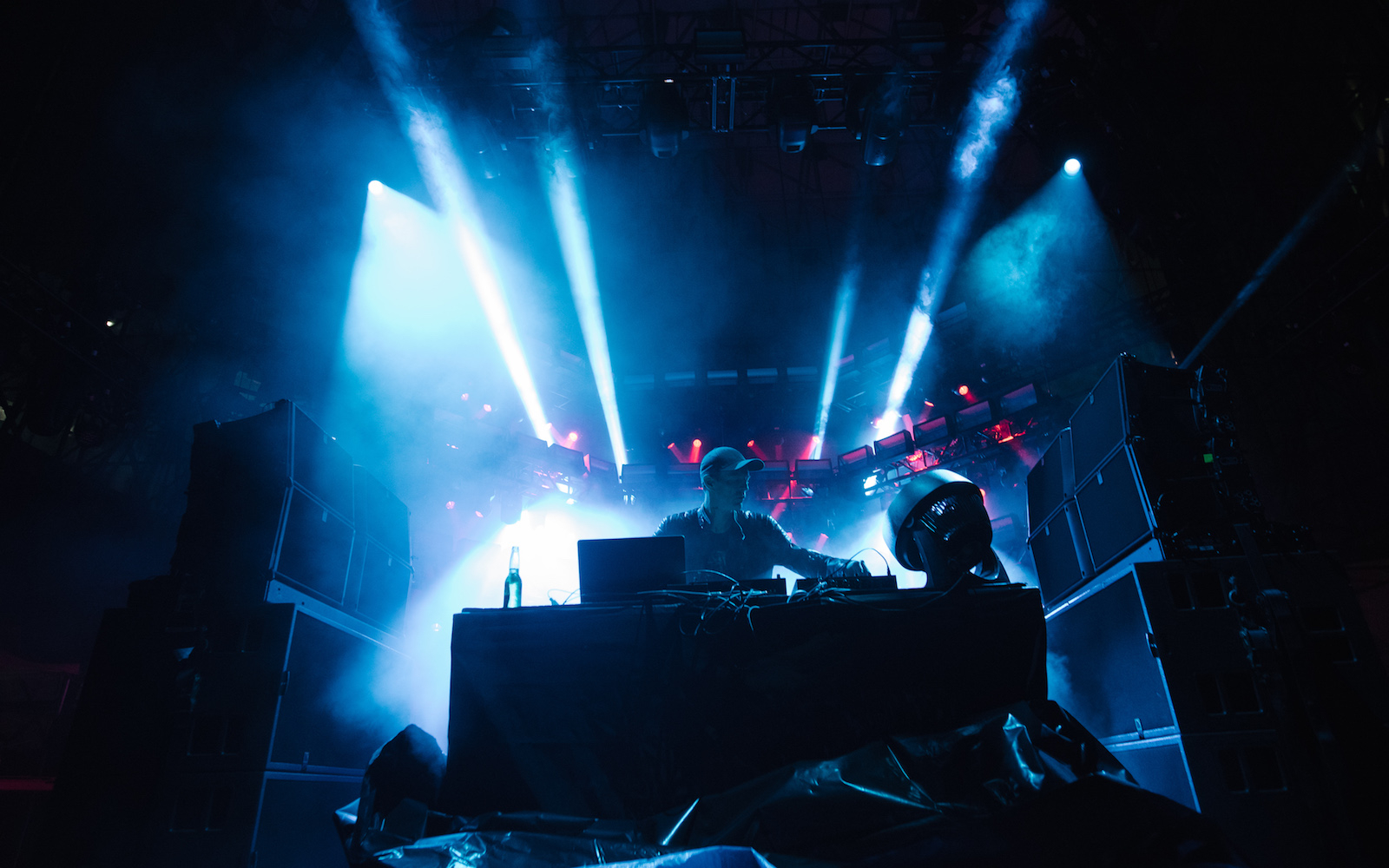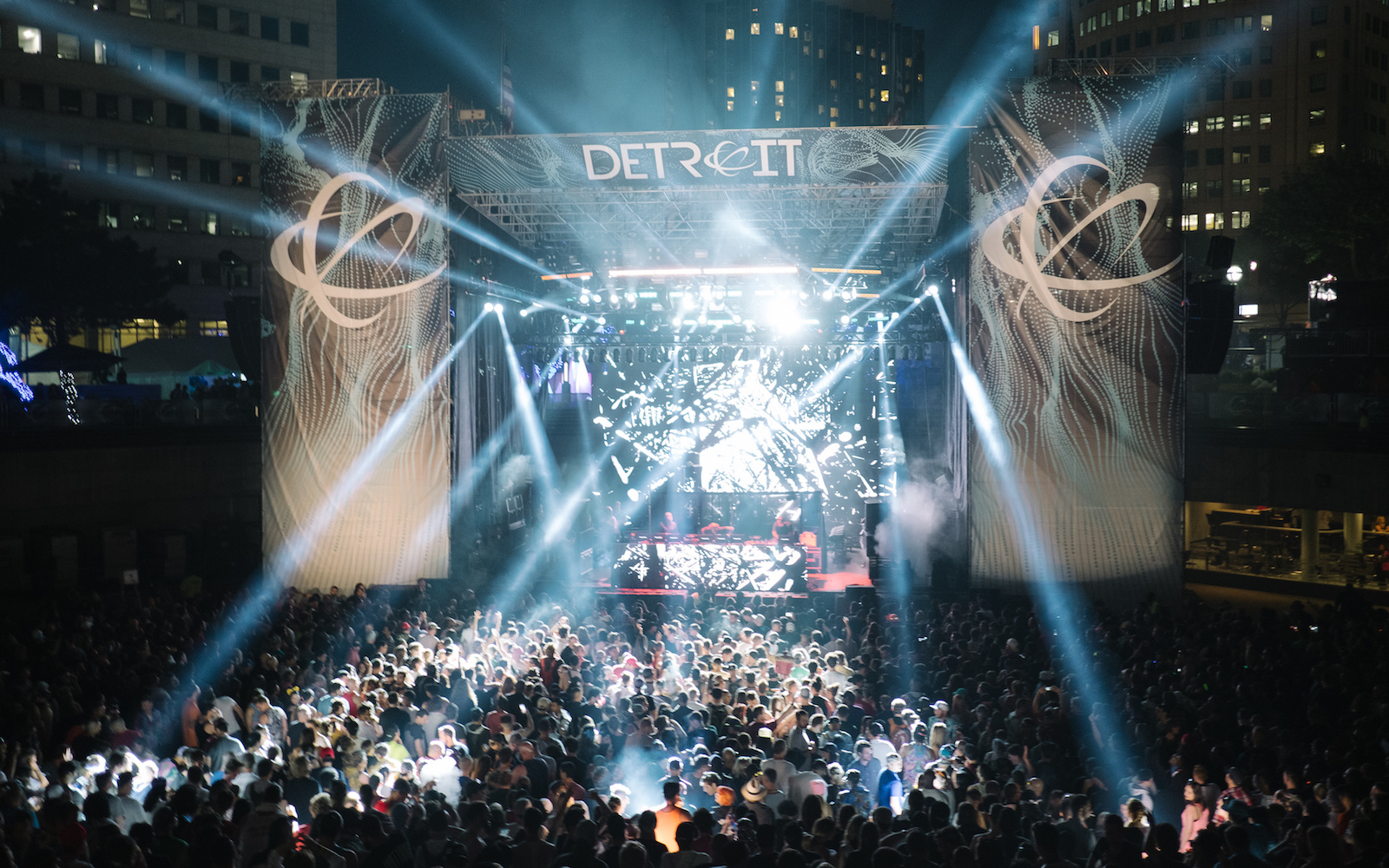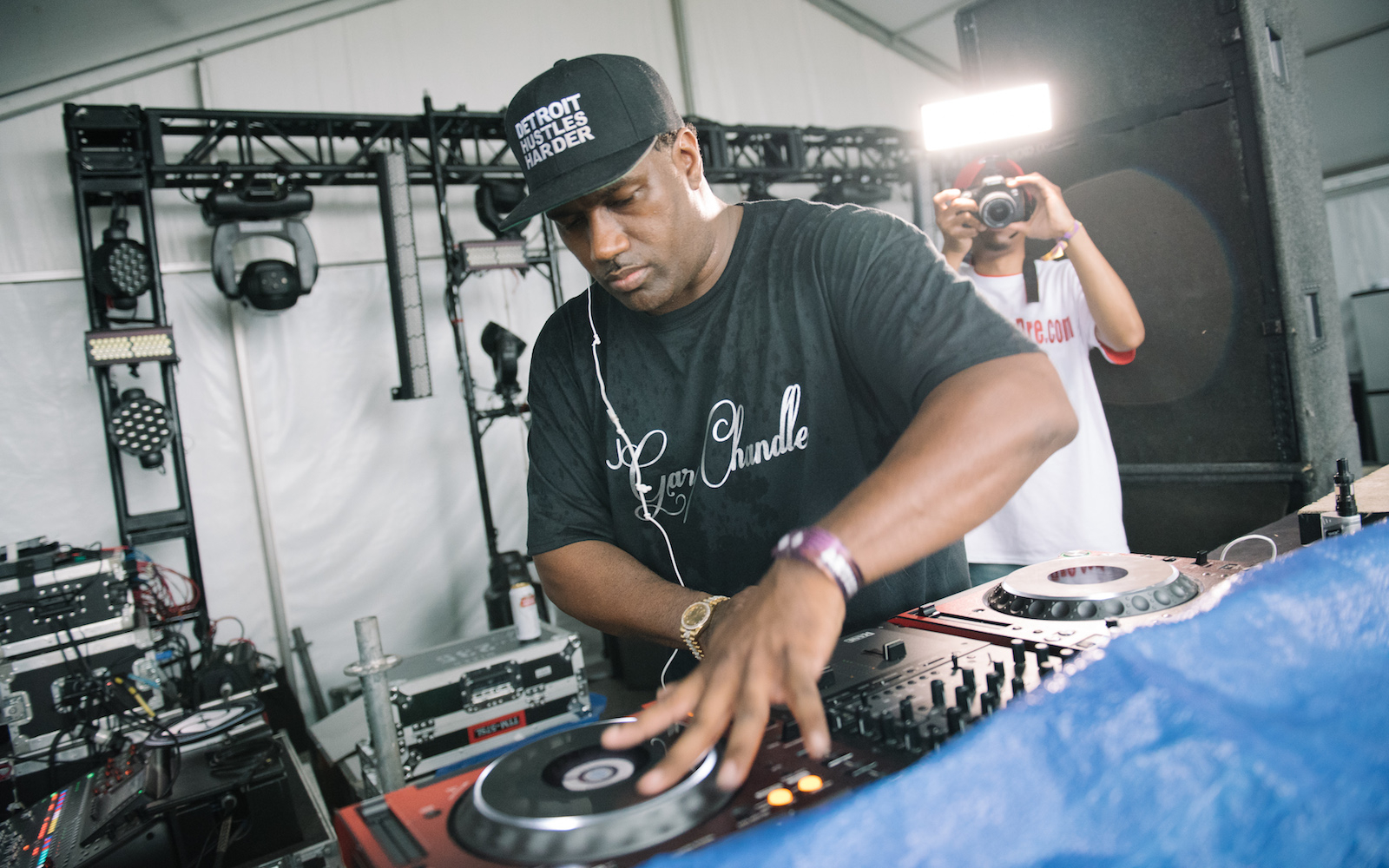Photo credit /
Bruno Postigo
Movement 2017: Five key performances
- PublishedJun 2, 2017
- Words
- Share
- There was a mood of cautious optimism at this year's Movement festival. Detroit is undergoing a slow recovery after filing for bankruptcy in 2013. The scars left by years of urban decay remain, but there are signs of a comeback. Infrastructure projects are in full swing, and many locals I met talked brightly of the city's prospects.
The Movement weekend brings techno fans flooding into the city from around Michigan and beyond. The festival's home is Hart Plaza in downtown Detroit. A huge sculpture of an arm and clenched fist—a tribute to the former heavyweight champion boxer Joe Louis—hangs in the middle of a busy intersection on the site's edge. The Renaissance Center, a group of tall buildings that includes the General Motors headquarters, looms over the plaza, while across the Detroit River lies Windsor, Canada. Hart Plaza is the beating heart of Movement, but the city's other techno hotspots are abuzz for the festival weekend. On the morning of the first day, Underground Resistance's Submerge complex on East Grand Blvd was a hive of activity. People paused to carefully examine items in the building's techno museum, before filing downstairs to the basement to buy records and UR merchandise.
As with other major festivals, like Sónar in Barcelona, Movement is the centerpiece around which countless other official and unofficial parties have sprouted. There's Interdimensional Transmissions and The Bunker's No Way Back, a party with a devoted following that celebrated its tenth anniversary on the Sunday night of Movement. There's the queer extravaganza Club Toilet, and Seth Troxler and co.'s famously sloppy daytime party at the Old Miami. Dig deeper and you could find yourself in a tiny basement by 8 Mile Road listening to Anthony "Shake" Shakir, or in the middle of a multi-level bar dancing to Midwest favourite DJ Shiva. It all paints a picture of a US techno scene in good health.
Movement's booking policy is often the subject of debate, with the festival looking to strike a balance between keeping lineups fresh and paying homage to the city's rich electronic music history. It seemed that in 2017 they got the balance just right. There were headline slots on the main stage for hometown heroes Juan Atkins, Kevin Saunderson and Derrick May, playing as the Belleville Three, while Richie Hawtin performed his new show, CLOSE, accompanied by spectacular visuals. Next to these regulars were slots for popular out-of-towners like Ben Klock, Carl Cox, Dixon and DJ Harvey.
Here are five of the weekend's key performances.
Larry Heard Larry Heard has made a welcome return to live performance, and his Saturday evening slot was his first appearance at Movement since 2010. Accompanied by Mr. White, Heard worked his way through his anthem-rich back catalogue. The iconic bassline to "Can You Feel It" emerged, then disappeared, and then returned later in the set. Heard's performance, as with his music, was a mix of tempos and moods, from acid-laced freakouts to emotional deep house. Heard and Mr. White sang as the shadows lengthened and the baking sun dipped below the tall buildings of downtown Detroit. Though he's not going to win any awards for his visual show (it was almost charmingly outdated), flashiness has never been part of Heard's MO. A hardware malfunction was fixed in time for a rousing rendition of "Deja Vu," and the airing of "The Sun Can't Compare" provided one of those special festival moments that lingers long in the mind.
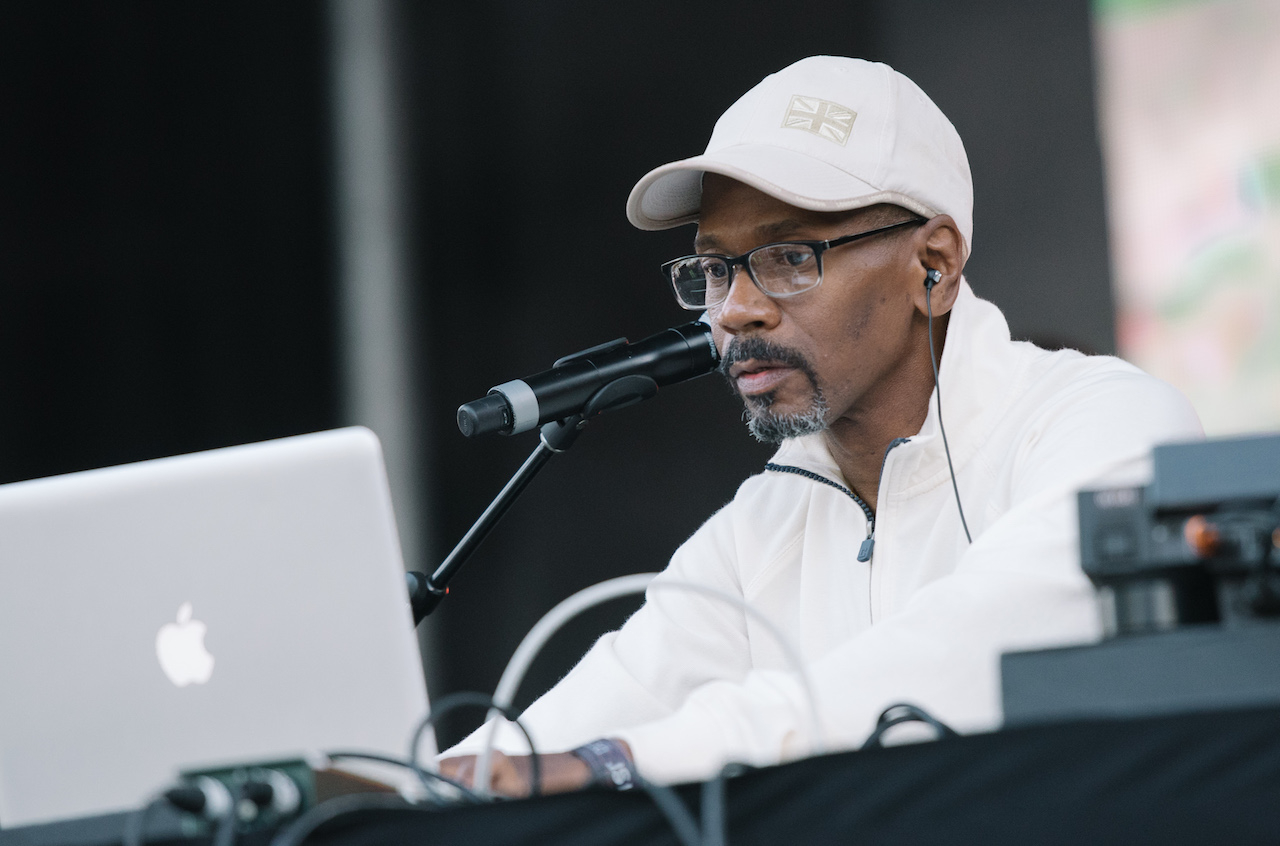 DJ Minx The small Made In Detroit stage hosts some of the city's highly talented yet underappreciated DJs. This year there were plenty of acts respected in Detroit but without big reputations elsewhere—Garry Chandler, say, or DJ Psycho of the Detroit Techno Militia. (However if there was one criticism to be made of the stage, and the festival as a whole, it was a lack of female artists.) I hadn't seen DJ Minx spin before, and her set was one of the revelations of the weekend. There was a playful, stomping energy to every track she played—a procession of deranged pianos, frenetic hats, and, at one point, a joyously received version of Tim Deluxe's "It Just Won't Do." It would come as little surprise if DJ Minx is one of the next Motor City DJs to achieve international recognition.
DJ Minx The small Made In Detroit stage hosts some of the city's highly talented yet underappreciated DJs. This year there were plenty of acts respected in Detroit but without big reputations elsewhere—Garry Chandler, say, or DJ Psycho of the Detroit Techno Militia. (However if there was one criticism to be made of the stage, and the festival as a whole, it was a lack of female artists.) I hadn't seen DJ Minx spin before, and her set was one of the revelations of the weekend. There was a playful, stomping energy to every track she played—a procession of deranged pianos, frenetic hats, and, at one point, a joyously received version of Tim Deluxe's "It Just Won't Do." It would come as little surprise if DJ Minx is one of the next Motor City DJs to achieve international recognition.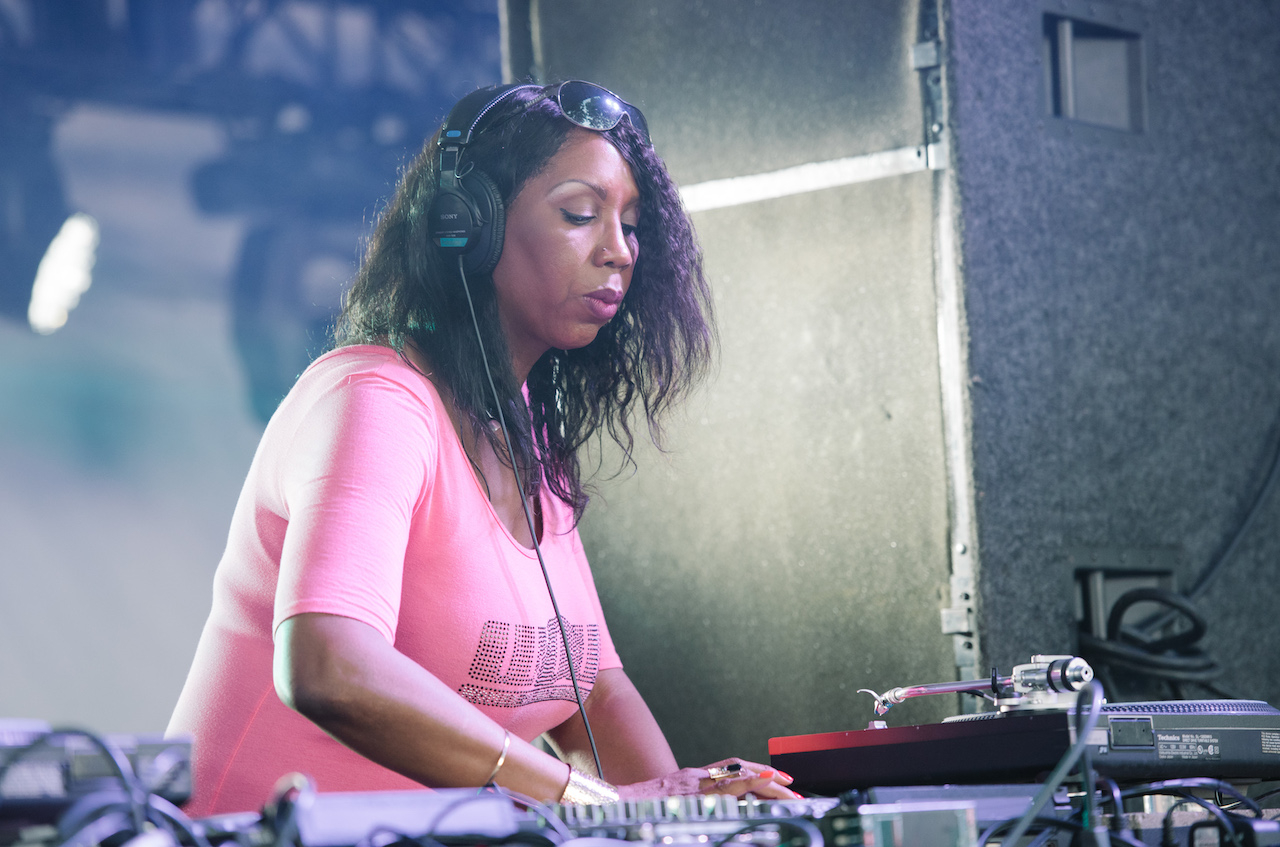 STERAC A rainstorm swept through Detroit on the second day of the festival. The risk of lightning meant Movement organisers were forced to temporarily close the festival's outdoor stages for safety reasons. This meant people flocked to the sheltered RA Underground stage, which was a reliable spot for escape: no matter the time or weather conditions outside, the Underground stage was always dark and sweaty, the music pounding and loud. As the rain thrashed down, the Dutch artist Steve Rachmad, playing as STERAC, dished out a consummate set of 130 BPM techno. Both Rachmad and the artist who played before him, DVS1, marshalled the huge speaker stacks as well as anyone else I heard that weekend, the sound booming but crisp. (By most accounts the Underground stage was sounding better than it had done in years.) Before his set started, Rachmad showed me a flyer from the first time he came to play in Detroit, back in the early 2000s when Movement festival was called DEMF. Listen to Rachmad's music and it's obvious he has an affinity for the Motor City. The reception to his performance this year suggests the feeling is mutual.
STERAC A rainstorm swept through Detroit on the second day of the festival. The risk of lightning meant Movement organisers were forced to temporarily close the festival's outdoor stages for safety reasons. This meant people flocked to the sheltered RA Underground stage, which was a reliable spot for escape: no matter the time or weather conditions outside, the Underground stage was always dark and sweaty, the music pounding and loud. As the rain thrashed down, the Dutch artist Steve Rachmad, playing as STERAC, dished out a consummate set of 130 BPM techno. Both Rachmad and the artist who played before him, DVS1, marshalled the huge speaker stacks as well as anyone else I heard that weekend, the sound booming but crisp. (By most accounts the Underground stage was sounding better than it had done in years.) Before his set started, Rachmad showed me a flyer from the first time he came to play in Detroit, back in the early 2000s when Movement festival was called DEMF. Listen to Rachmad's music and it's obvious he has an affinity for the Motor City. The reception to his performance this year suggests the feeling is mutual.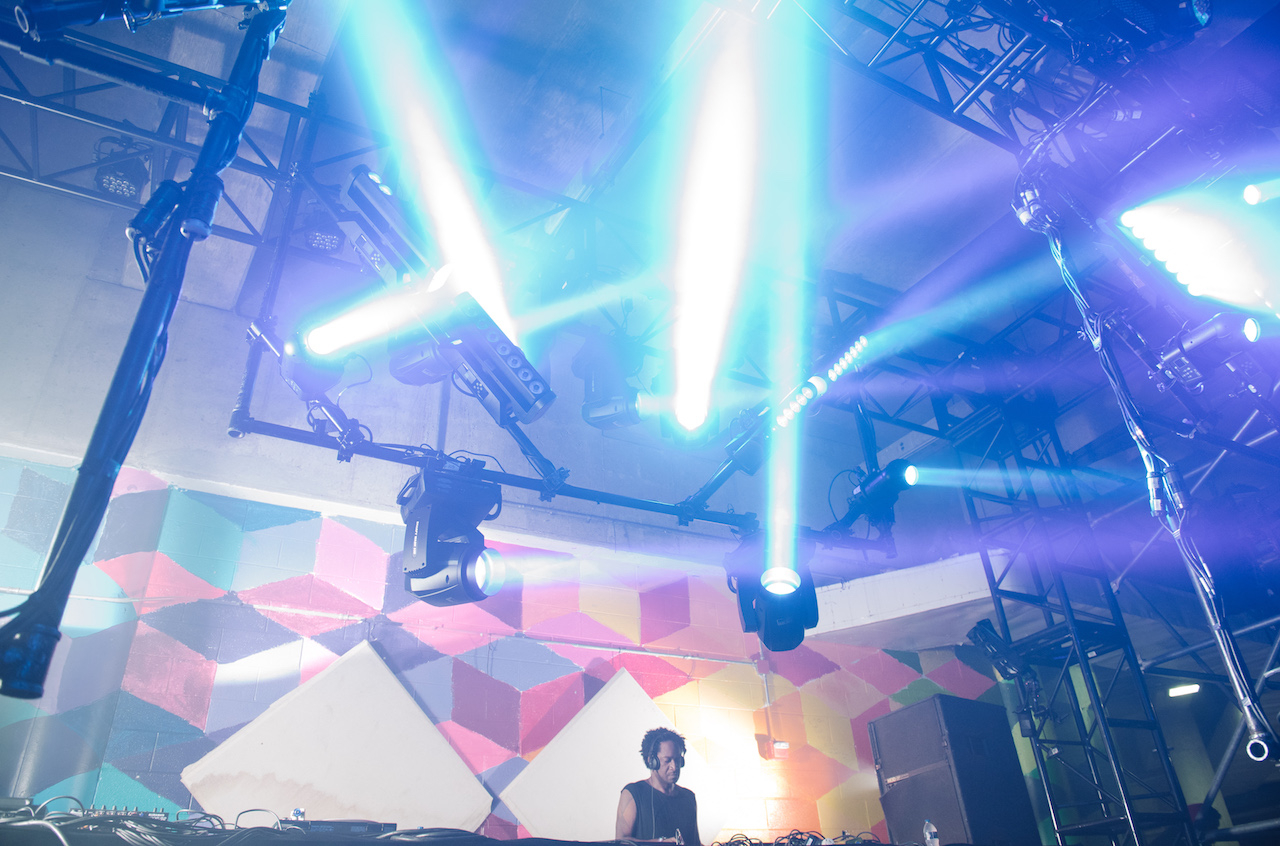 Danny Brown A large flag bearing one of the Movement weekend's inescapable slogans, "Detroit Hustles Harder," rippled through the air as local rapper Danny Brown came onto the Red Bull Music Academy stage a few minutes late for his closing slot on Monday evening. The blustery conditions—a rainstorm swept across the horizon during Brown's show, narrowly missing the festival site—gave the air a wild, crackling feel. Though Carl Cox had the main stage heaving for his closing set, the atmosphere for Brown was unlike anything I had seen all weekend. Hands were flung in the air. The front few rows danced wildly, while at the back phones were held aloft to record the mayhem. Large droplets of rain briefly threatened to turn into a deluge, but the crowd was going nowhere as they sang along to tunes like "25 Bucks" and "Ain't It Funny," easily keeping up with the rapper's frenetic vocals. Brown's booking was by no means a total curveball—he played Movement in 2015, and the festival has a long history of booking rap and hip-hop acts, dating back to a Jaylib performance in 2004. But the crowd's reaction here showed there's currently plenty of appetite for music beyond four-on-the-floor.
Danny Brown A large flag bearing one of the Movement weekend's inescapable slogans, "Detroit Hustles Harder," rippled through the air as local rapper Danny Brown came onto the Red Bull Music Academy stage a few minutes late for his closing slot on Monday evening. The blustery conditions—a rainstorm swept across the horizon during Brown's show, narrowly missing the festival site—gave the air a wild, crackling feel. Though Carl Cox had the main stage heaving for his closing set, the atmosphere for Brown was unlike anything I had seen all weekend. Hands were flung in the air. The front few rows danced wildly, while at the back phones were held aloft to record the mayhem. Large droplets of rain briefly threatened to turn into a deluge, but the crowd was going nowhere as they sang along to tunes like "25 Bucks" and "Ain't It Funny," easily keeping up with the rapper's frenetic vocals. Brown's booking was by no means a total curveball—he played Movement in 2015, and the festival has a long history of booking rap and hip-hop acts, dating back to a Jaylib performance in 2004. But the crowd's reaction here showed there's currently plenty of appetite for music beyond four-on-the-floor.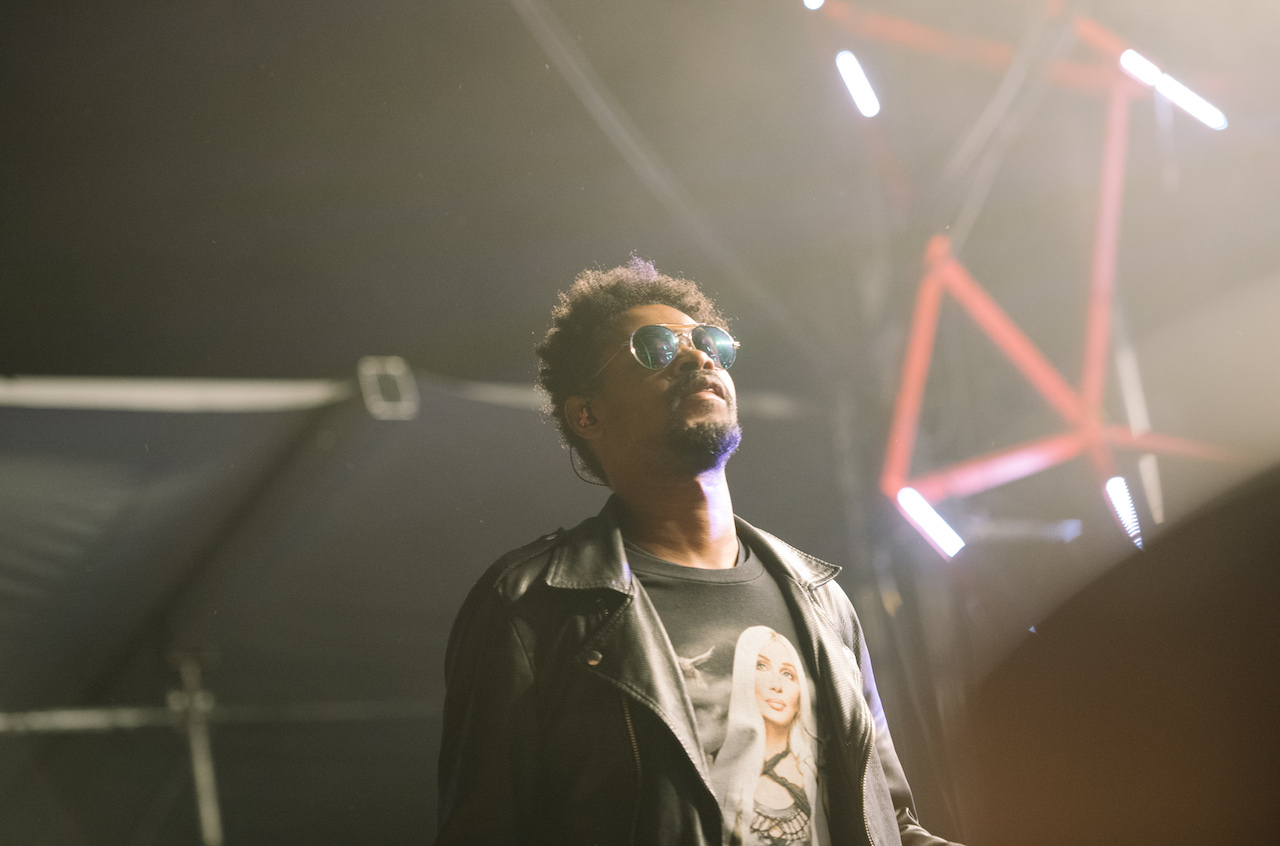 Terrence Dixon as Population One As with Danny Brown, Terrence Dixon is a Detroit artist who was booked for the final night of Movement. The two artist's personalities are almost diametrically opposed: Brown is loud and outspoken, while Dixon is famously publicity-shy. Two nights before I had seen Dixon onstage at a Tresor event at the Tangent Gallery alongside Thomas Fehlmann, a performance that offered a glimpse into their ongoing collaboration. This time he was performing on the Made In Detroit stage as Population One, accompanied by a drummer and a keyboardist. The first 20 minutes of the set were thick with layers of percussion and dark, spacey chords. It was engrossing stuff, but the crowd seemed happy when the trio fell into a clubby groove that was packed with the off-kilter rhythms Dixon is known for. Then suddenly the trio was going at full-tilt, conjuring complex drum patterns and melodic basslines. It was clearly an improvised set, which gave the show a level of excitement you don't get with preprogrammed shows. Though he only attracted a small crowd, Dixon gave one of the most engrossing performances of the weekend.
Terrence Dixon as Population One As with Danny Brown, Terrence Dixon is a Detroit artist who was booked for the final night of Movement. The two artist's personalities are almost diametrically opposed: Brown is loud and outspoken, while Dixon is famously publicity-shy. Two nights before I had seen Dixon onstage at a Tresor event at the Tangent Gallery alongside Thomas Fehlmann, a performance that offered a glimpse into their ongoing collaboration. This time he was performing on the Made In Detroit stage as Population One, accompanied by a drummer and a keyboardist. The first 20 minutes of the set were thick with layers of percussion and dark, spacey chords. It was engrossing stuff, but the crowd seemed happy when the trio fell into a clubby groove that was packed with the off-kilter rhythms Dixon is known for. Then suddenly the trio was going at full-tilt, conjuring complex drum patterns and melodic basslines. It was clearly an improvised set, which gave the show a level of excitement you don't get with preprogrammed shows. Though he only attracted a small crowd, Dixon gave one of the most engrossing performances of the weekend.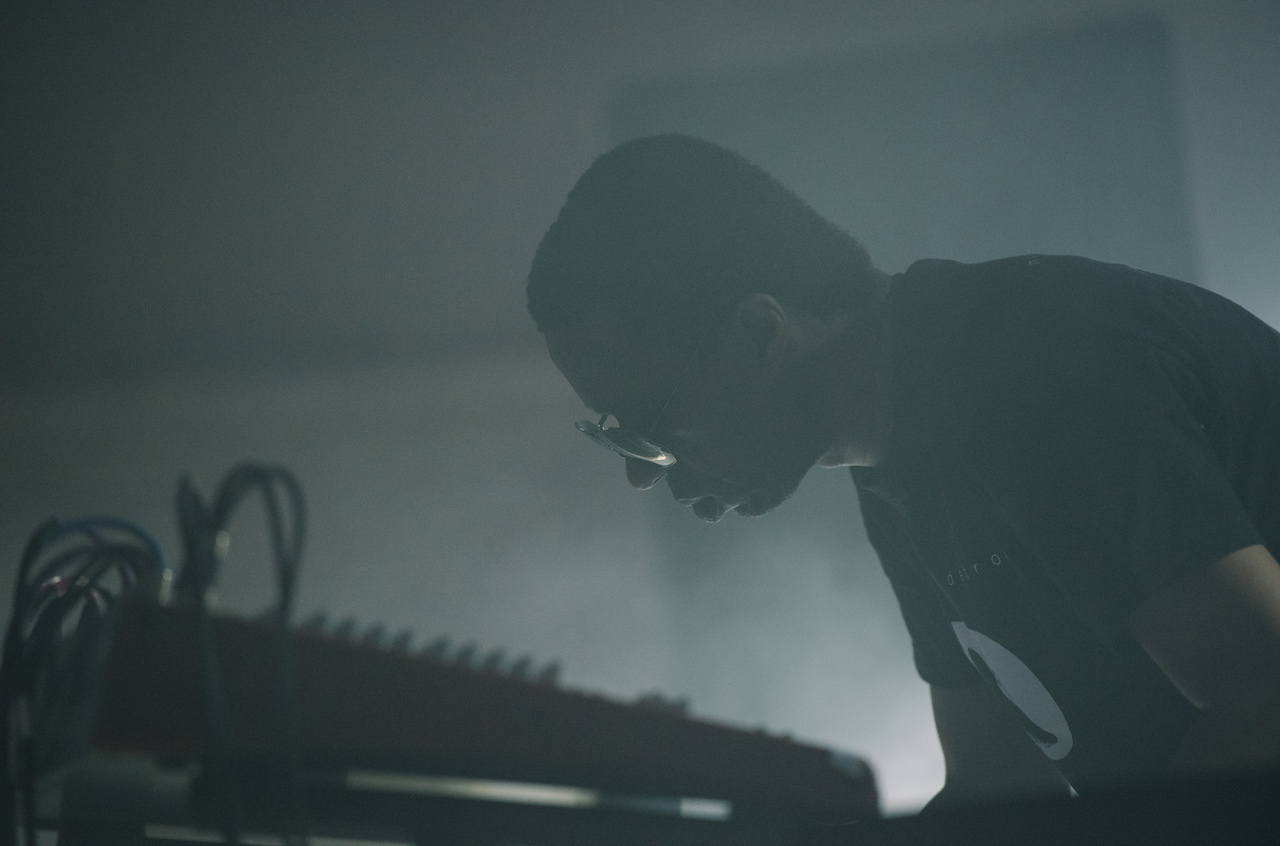 0303
0303



